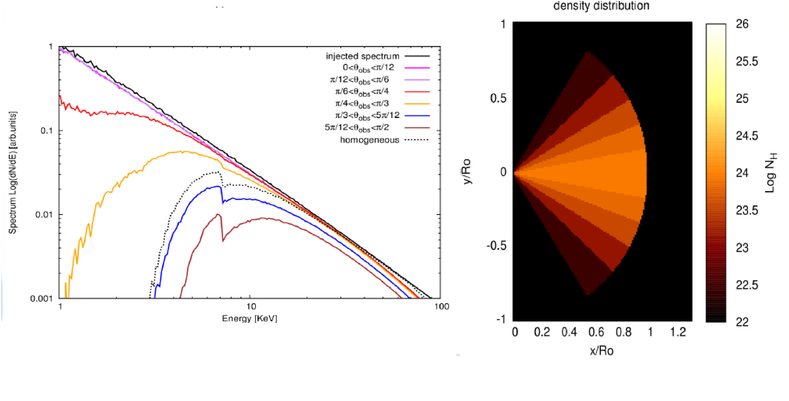
Left: Monte Carlo simulations of transmitted AGN spectra through a toroidal obscuring material with variable density profile (see right panel). The Monte Carlo simulations include both photoelectric absorption and Compton scattering. The intrinsic AGN spectrum is a power-law. The different colours indicate X-ray spectra observed at different zenith distances. Right: Cross-section of the toroidal geometry used to produce the simulated spectra shown in the left panel. The The torus is azimuthally symmetric and the density changes along the zenith angle as indicated by the shading of the different slices. At 90° the equivalent hydrogen column density of the torus is 1024cm-2. More details can be found here.